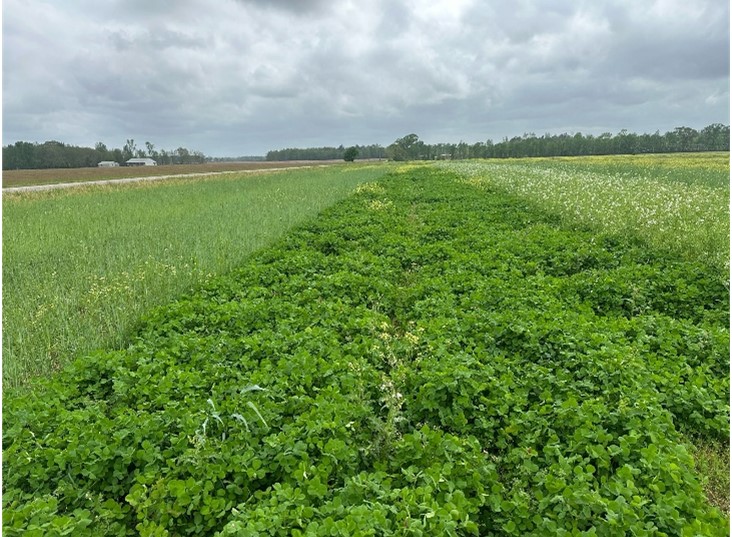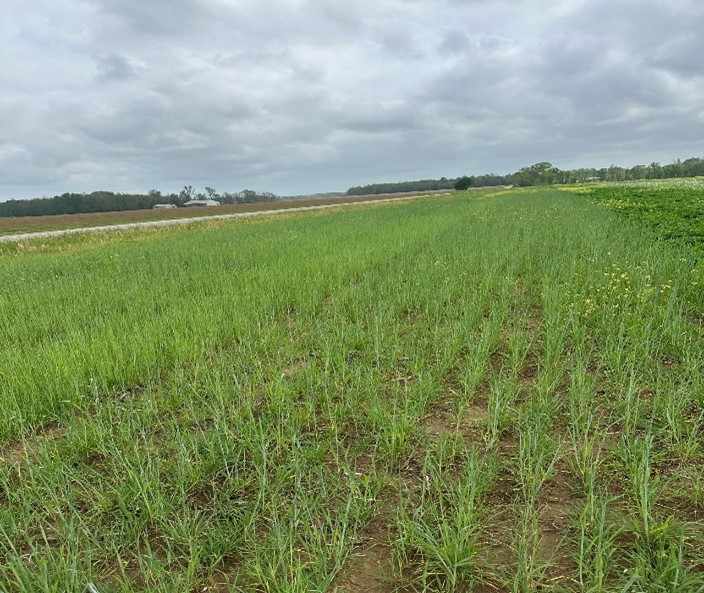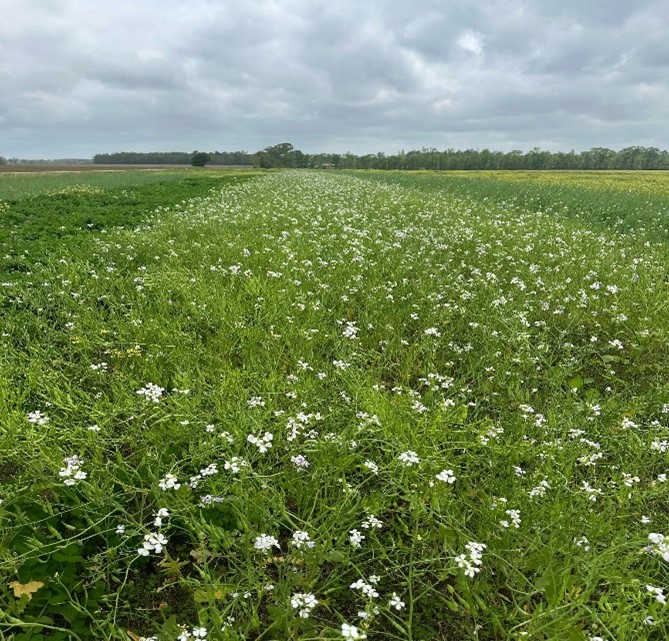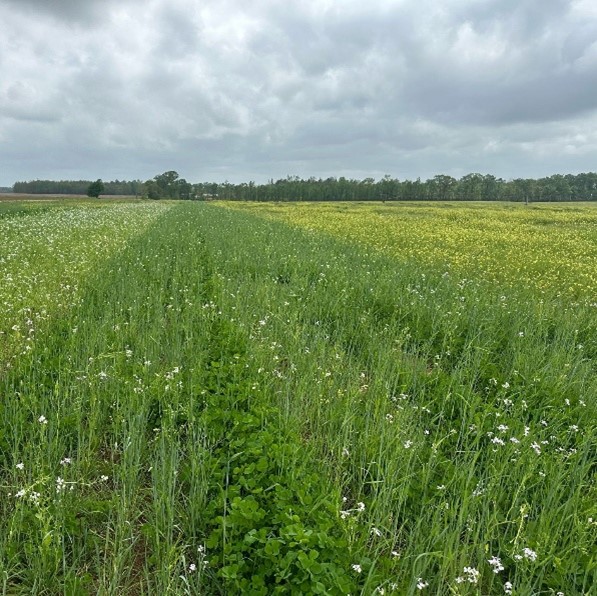In row crop systems of West Florida, cover crops are proving to be more than just a conservation tool—they’re becoming an integral part of building resilient and productive farming operations. From reducing erosion to boosting organic matter, integrating cover crops into a cropping system offers both immediate and long-term agronomic benefits.
West Florida’s soils, particularly the sandy types common in the region, are prone to erosion and nutrient leaching. Cover crops serve as a protective blanket during the off-season, reducing the impact of rainfall and wind. In addition, the root systems of cover crops improve soil structure and help retain nutrients and moisture.
Leguminous cover crops, such as crimson clover, can also contribute biologically fixed nitrogen to the soil, reducing the need for synthetic fertilizers in the spring. Grasses like cereal rye and oats are excellent for biomass production and weed suppression. When managed correctly, a cover crop mix can provide multiple benefits at once.
In Escambia and Santa Rosa Counties UF/IFAS Extension is conducting a collaborative study to evaluate how different winter cover crops (specie listed below) influence the productivity of peanut and cotton systems. This study focuses on biomass accumulation, weed suppression, and the most effective cover crops for optimizing cotton and peanut yield, thereby contributing to more sustainable and productive agricultural practices. The goal is to provide row crop producers with practical local information on the benefits and trade-offs of species selection in cover cropping systems for the Panhandle region.
–
CLOVER
Clover is a nitrogen-fixing legume that plays a significant role in enhancing soil fertility, reducing the need for synthetic N inputs. It is well-suited for conservation systems due to its dense canopy and ground coverage.
Research Insight: Clover can produce between 2,500 to 4,000 lbs/ac of biomass under ideal conditions and suppress over 70% of winter annual weeds. (Clark, 2007; NRCS Cover Crop Termination Guidelines)
–
RYE
Rye is widely adopted in Southeastern cover cropping due to its adaptability and rapid biomass accumulation. Its residue forms a thick mat post-termination, which is especially beneficial for early season weed suppression.
Research Insight: Rye can produce up to 6,000 lbs/ac of biomass and has been shown to reduce weed biomass by over 90% in no-till systems due to its allelopathic effects. (Mirsky et al., 2011)
–
RADISH
Radish’s deep taproots are highly effective in breaking through compacted soils. While their biomass is lower compared to grasses, their role in improving soil porosity and water infiltration is critical.
Research Insight: Radish typically yields 1,500 to 3,500 lbs/ac of biomass and is effective in nutrient scavenging, especially nitrogen, but has moderate weed suppression alone. (Weil & Kremen, 2007)
–
MIX OF CLOVER, RADISH AND RYE
This multi-species blend combines complementary traits: nitrogen fixation from clover, deep rooting and compaction alleviation from radish, and high biomass and weed suppression from rye. The synergy of these species contributes to a resilient soil system and prolonged weed control.
Research Insight: Mixed cover crops can yield over 5,000 lbs/ac of biomass and reduce weed pressure by up to 85%, offering improved soil structure and microbial activity. (SARE, 2012; CTIC Reports)
–
Long-Term Investment
While cover crops may not provide an immediate return on investment in every field, their cumulative benefits—such as improved nutrient cycling, enhanced soil biology, and better drought resilience—are compelling. Integrating them as a standard practice supports both environmental stewardship and long-term farm profitability.
–
Management Tips for Success
To get the most from cover crops, timing and termination are critical. Cover crops should be planted early enough in the fall to ensure sufficient biomass accumulation before winter dormancy. In the spring, timely termination—usually 2-3 weeks before cash crop planting—prevents moisture competition and allows time for residue breakdown.
As cover cropping gains momentum across the Panhandle, local research will continue to guide best practices tailored to our region’s unique conditions. Stay tuned for study updates, reach out to Extension Agent Murilo Morata for more information, and plan to attend upcoming field days to see results firsthand and collaborate with fellow producers and Extension specialists.
–
Resources
- Clark, A. (2007). Managing Cover Crops Profitably (3rd ed.). Sustainable Agriculture Research & Education (SARE).
– - NRCS Cover Crop Termination Guidelines. USDA Natural Resources Conservation Service (NRCS).
– - Mirsky, S. B., et al. (2011). Conservation tillage issues: Cover crop-based organic rotational no-till grain production in the mid-Atlantic region, USA. Renewable Agriculture and Food Systems, 27(1), 31–40. DOI: 10.1017/S1742170511000457
– - Weil, R. R., & Kremen, A. (2007). Thinking across and beyond disciplines to make cover crops pay. Journal of the Science of Food and Agriculture, 87(5), 551–557. DOI: 10.1002/jsfa.2742
– - SARE (2012). Cover Crop Economics: Opportunities to Improve Your Bottom Line in Row Crops. Sustainable Agriculture Research & Education (SARE).
– - CTIC Reports (Conservation Technology Information Center). Various cover crop adoption and performance reports.




